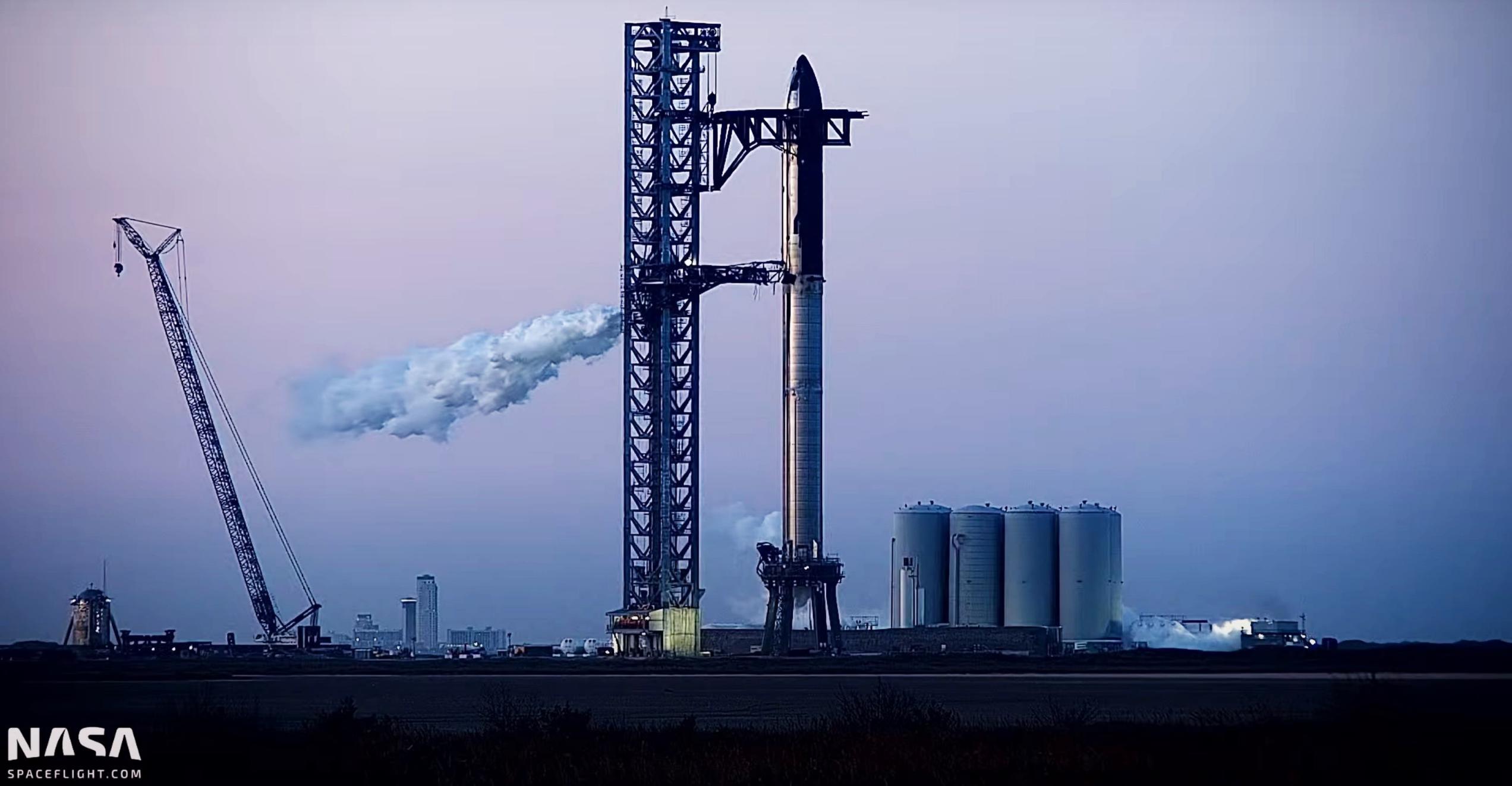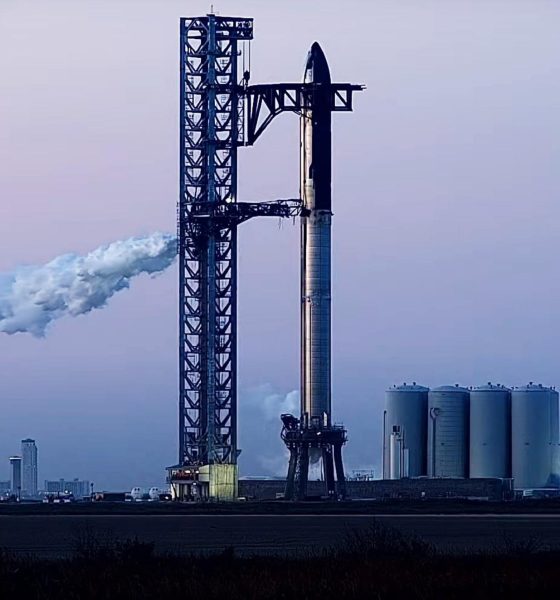After rapidly stacking Ship 20 and Booster 4 the evening prior, SpaceX appears to have begun testing a fully stacked Starship rocket for the first time ever.
Though the test SpaceX subjected Starship to was by no means ambitious and in spite of the fact that it no longer appears that Ship 20 and Booster 4 will ever fly, the first test of the first fully integrated prototype of a new rocket is still an immensely significant achievement – particularly so for the largest rocket ever built.
Standing around 119 meters (~390 ft) tall, Starship is unequivocally the largest and most voluminous rocket ever built. With its 29 Raptor V1 engines, the fully assembled Ship 20 and Booster 4 (B4) stack would have likely weighed around 4000-5000 tons (9-11M lb) and been able to produce around 5400 tons (11.9M lbf) of thrust at liftoff – substantially heavier and more powerful than Saturn V or N1, the largest rockets ever successfully and unsuccessfully launched.
For its first fully-integrated test, though, SpaceX appears to have put Starship through a fairly limited cryogenic proof – a test where flammable propellant is replaced with a similarly cold (cryogenic) fluid that’s similar enough to subject a rocket to similar thermal and mechanical stresses. For Ship 20 and Booster 4’s combined debut, Super Heavy was filled maybe 10-20% and Starship around 25-50% of the way with either liquid nitrogen (LN2) or a combination of LN2 and liquid oxygen (LOx). It’s difficult to tell but it’s unlikely any methane (LCH4) fuel was involved.
Back on the ground, Starship S20 completed five separate cryogenic proof tests before its first test on top of Super Heavy. More importantly, Ship 20 successfully completed several static fire tests, each of which also functioned as a wet dress rehearsal with LCH4/LOx propellant. Booster 4 had also passed several cryogenic proof tests. In that sense, it’s unlikely that SpaceX had a great deal of uncertainty as to whether either prototype would be able to complete yet another test.
Beyond the basic mechanical demonstration that Super Heavy Booster 4 is strong enough to support a partially loaded Starship, which probably wasn’t in doubt, it’s likely that the main purpose of this first full-stack cryoproof was to ensure that all the systems required to fuel Starship on top of Super Heavy were working as expected. That’s no small feat given that Starship is both the tallest rocket and largest upper stage ever assembled. To fully fuel a Starship for an orbital launch, around 1200 tons (~2.65M lb) of propellant (or LN2 for a cryoproof) – equivalent to the weight of more than two entire Falcon 9 rockets – must be pumped around 85 meters (~275 ft) up Starbase’s integration tower.
That requires thousands of feet of plumbing and a symphony of giant valves and pumps, all of which must work in concert – without leaking, jamming, or freezing – to fuel Starship. As such, the first full-stack cryoproof was just as much – or more – of a test of the orbital launch site’s launch/integration tower and tank farm. That first test is just the start of a long process, though, and it’s likely that SpaceX will attempt an increasingly ambitious series of tests with Booster 4 and Ship 20 over the next week or two.
That could involve simply filling the rocket further and raising its tank pressures or it could potentially culminate in a partial wet dress rehearsal with methane and oxygen propellant in place of liquid nitrogen. There’s an even smaller chance that SpaceX could attempt to static fire Super Heavy B4 for the first time, although sources like NASASpaceflight are no longer confident that Booster 4 will be static fired before retirement. More to the point, it would be uncharacteristically risky behavior from SpaceX to perform the very first static fire of a new prototype with an already proven Starship sitting on top of it. An anomaly as small as an uncontrolled fire – far from uncommon for Starships – could easily risk the catastrophic destruction of both stages, which would itself run the risk of significantly damaging the orbital launch site, which could easily take months to repair.
Nonetheless, there’s still a chance. SpaceX has opportunities for additional testing on March 17th, 18th, 21st, and 22nd.

News
Tesla launches its new branded Supercharger for Business with first active station

Tesla has officially launched its first branded Supercharger just months after initiating a new program that allows third-party companies to brand their own charging piles.
The site opened in Land O’ Lakes, Florida, and features eight V4 Supercharging stalls offering up to 325 kW of charging speed. It appears it was purchased by a company called Suncoast Credit Union. This particular branch is located Northeast of Tampa, which is on the Gulf of Mexico.
It features graphics of Florida animals, like alligators:
Here’s a video of the graphics being installed on the Tesla Superchargers at this site: https://t.co/oIfEPNZjAH pic.twitter.com/ENWakZ2qT9
— TESLARATI (@Teslarati) November 20, 2025
Tesla launched this program back in September, and it basically was a way to expand its Supercharger presence and also allow companies to pay for the infrastructure. Tesla maintains it. When it announced the “Supercharger for Business,” it said:
“Purchase and install Superchargers at your business. Superchargers are compatible with all electric vehicles, bringing EV drivers to your business by offering convenient, reliable charging.”
The program does a few things. Initially, it expands EV charging infrastructure and makes charging solutions more readily available for drivers. It can also attract people to those businesses specifically.
Tesla launches new Supercharger program that business owners will love
The chargers can also be branded with any logo that the business chooses, which makes them more personalized and also acts as an advertisement.
The best part is that the customers do not have to maintain anything about the Supercharger. Tesla still takes care of it and resolves any issues:
“We treat your site like we treat our sites. By providing you with a full-service package that includes network operations, preventative maintenance, and driver support, we’re able to guarantee 97% uptime–the highest in the industry.”
It appears the Superchargers will also appear within the in-car nav during routing, so they’ll be publicly available to anyone who needs to use them. They are still available to all EVs that have worked with Tesla to utilize its infrastructure, and they are not restricted to people who are only visiting the business.
Cybertruck
Tesla reveals its Cybertruck light bar installation fix
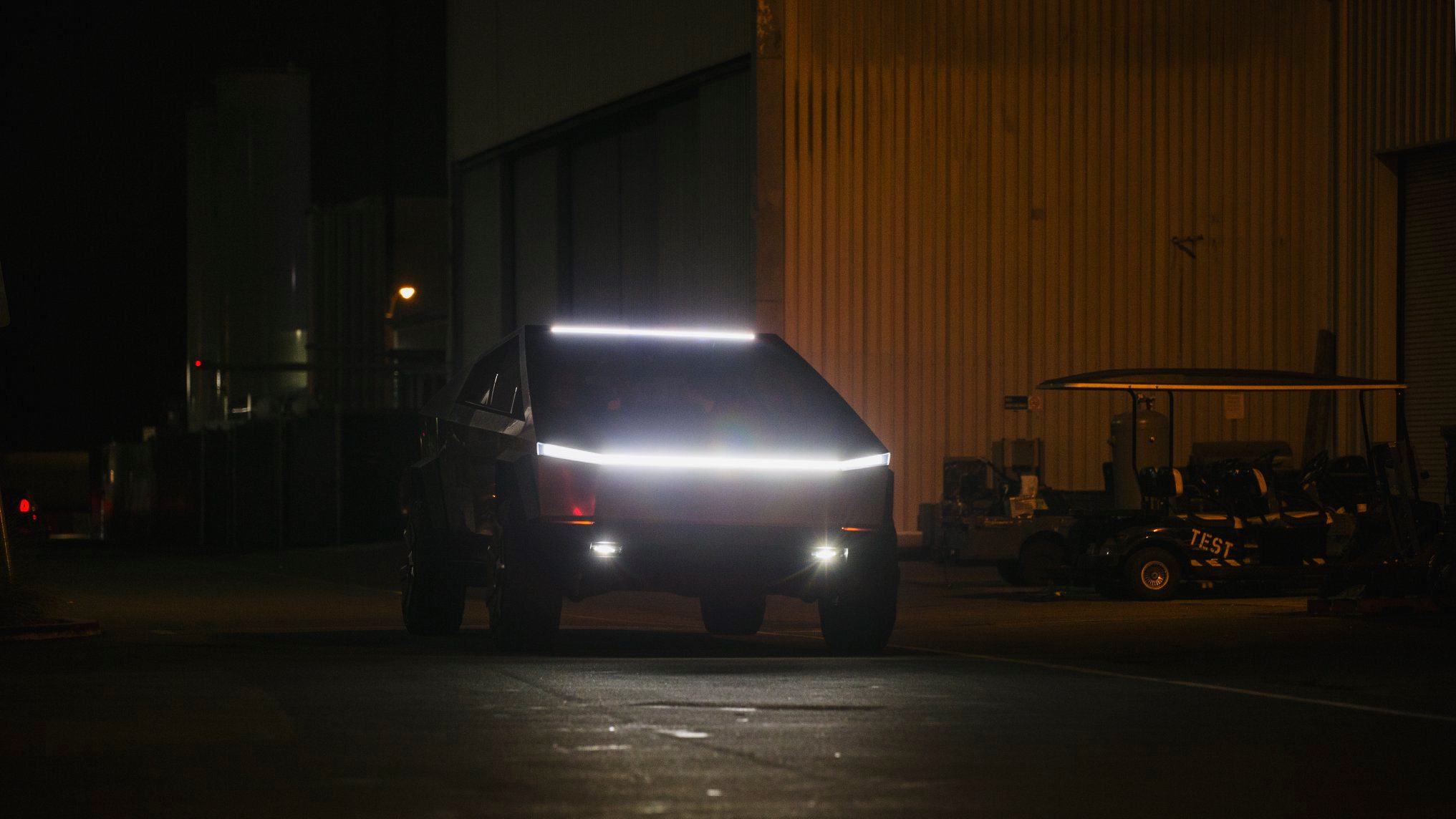
Tesla has revealed its Cybertruck light bar installation fix after a recall exposed a serious issue with the accessory.
Tesla and the National Highway Traffic Safety Administration (NHTSA) initiated a recall of 6,197 Cybertrucks back in October to resolve an issue with the Cybertruck light bar accessory. It was an issue with the adhesive that was provided by a Romanian company called Hella Romania S.R.L.
Tesla recalls 6,197 Cybertrucks for light bar adhesive issue
The issue was with the primer quality, as the recall report from the NHTSA had stated the light bar had “inadvertently attached to the windshield using the incorrect surface primer.”
Instead of trying to adhere the light bar to the Cybertruck with an adhesive, Tesla is now going to attach it with a bracketing system, which will physically mount it to the vehicle instead of relying on adhesive strips or glue.
Tesla outlines this in its new Service Bulletin, labeled SB-25-90-001, (spotted by Not a Tesla App) where it shows the light bar will be remounted more securely:
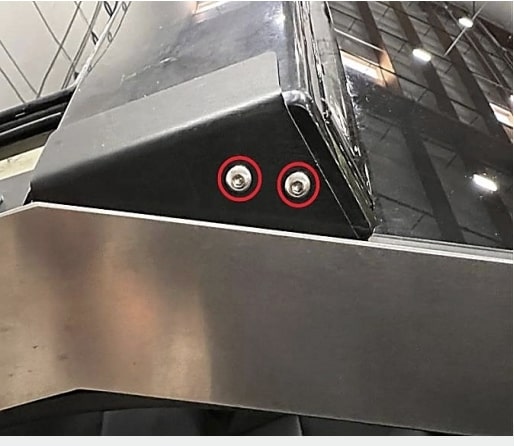
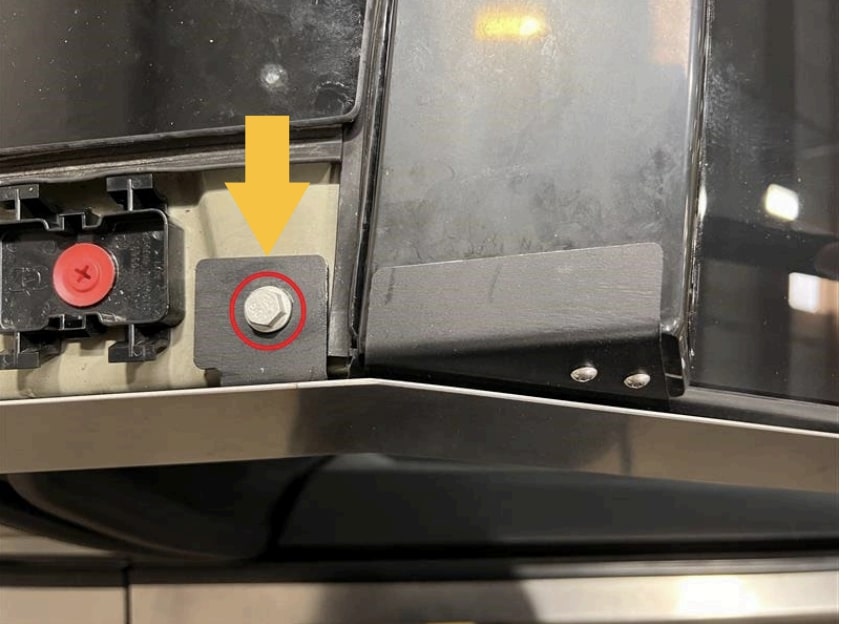
The entire process will take a few hours, but it can be completed by the Mobile Service techs, so if you have a Cybertruck that needs a light bar adjustment, it can be done without taking the vehicle to the Service Center for repair.
However, the repair will only happen if there is no delamination or damage present; then Tesla could “retrofit the service-installed optional off-road light bar accessory with a positive mechanical attachment.”
The company said it would repair the light bar at no charge to customers. The light bar issue was one that did not result in any accidents or injuries, according to the NHTSA’s report.
This was the third recall on Cybertruck this year, as one was highlighted in March for exterior trim panels detaching during operation. Another had to do with front parking lights being too bright, which was fixed with an Over-the-Air update last month.
News
Tesla is already expanding its Rental program aggressively
The program has already launched in a handful of locations, specifically, it has been confined to California for now. However, it does not seem like Tesla has any interest in keeping it restricted to the Golden State.
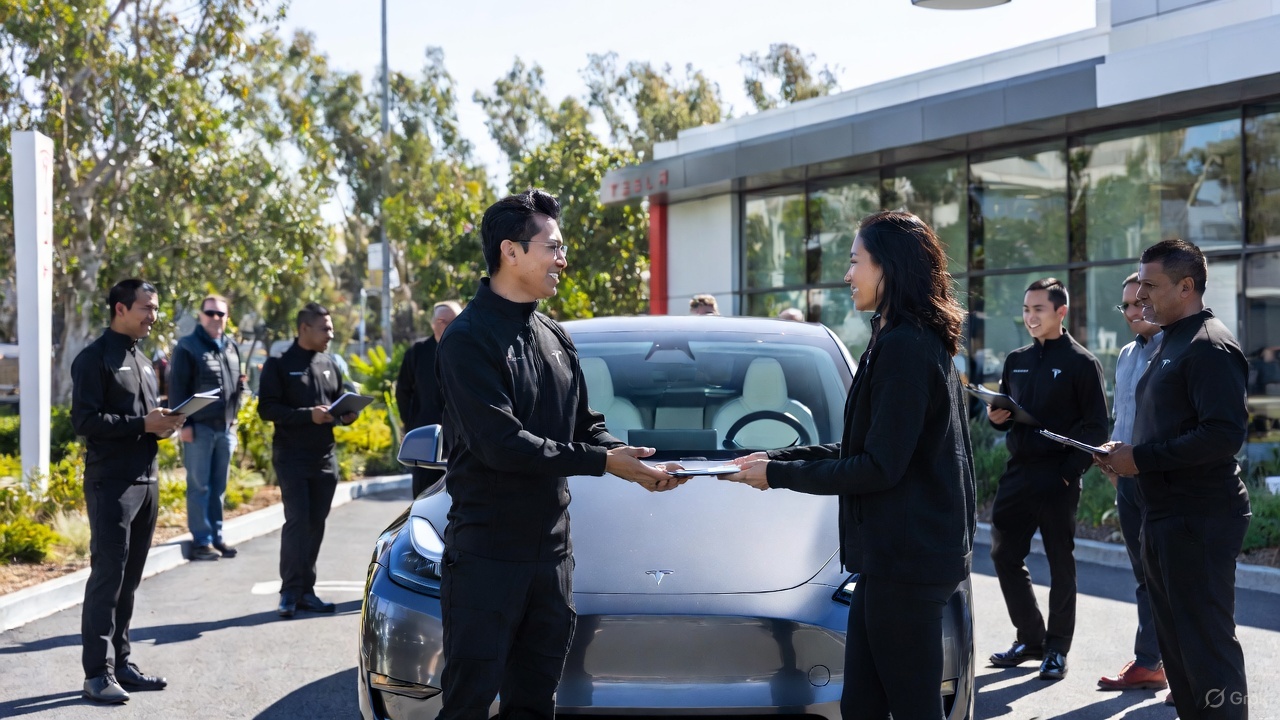
Tesla is looking to expand its Rental Program aggressively, just weeks after the program was first spotted on its Careers website.
Earlier this month, we reported on Tesla’s intention to launch a crazy new Rental program with cheap daily rates, which would give people in various locations the opportunity to borrow a vehicle in the company’s lineup with some outrageous perks.
Along with the cheap rates that start at about $60 per day, Tesla also provides free Full Self-Driving operation and free Supercharging for the duration of the rental. There are also no limits on mileage or charging, but the terms do not allow the renter to leave the state from which they are renting.
🚨🚨 If you look up details on the Tesla Rental program on Google, you’ll see a bunch of sites saying it’s because of decreasing demand 🤣 pic.twitter.com/WlSQrDJhMg
— TESLARATI (@Teslarati) November 10, 2025
The program has already launched in a handful of locations, specifically, it has been confined to California for now. However, it does not seem like Tesla has any interest in keeping it restricted to the Golden State.
Job postings from Tesla now show it is planning to launch the Rental program in at least three new states: Texas, Tennessee, and Massachusetts.
The jobs specifically are listed as a Rental Readiness Specialist, which lists the following job description:
“The Tesla Rental Program is looking for a Rental Readiness Specialist to work on one of the most progressive vehicle brands in the world. The Rental Readiness Specialist is a key contributor to the Tesla experience by coordinating the receipt of incoming new and used vehicle inventory. This position is responsible for fleet/lot management, movement of vehicles, vehicle readiness, rental invoicing, and customer hand-off. Candidates must have a high level of accountability, and personal satisfaction in doing a great job.”
It also says that those who take the position will have to charge and clean the cars, work with clients on scheduling pickups and drop-offs, and prepare the paperwork necessary to initiate the rental.
The establishment of a Rental program is big for Tesla because it not only gives people the opportunity to experience the vehicles, but it is also a new way to rent a car.
Just as the Tesla purchasing process is more streamlined and more efficient than the traditional car-buying experience, it seems this could be less painful and a new way to borrow a car for a trip instead of using your own.
